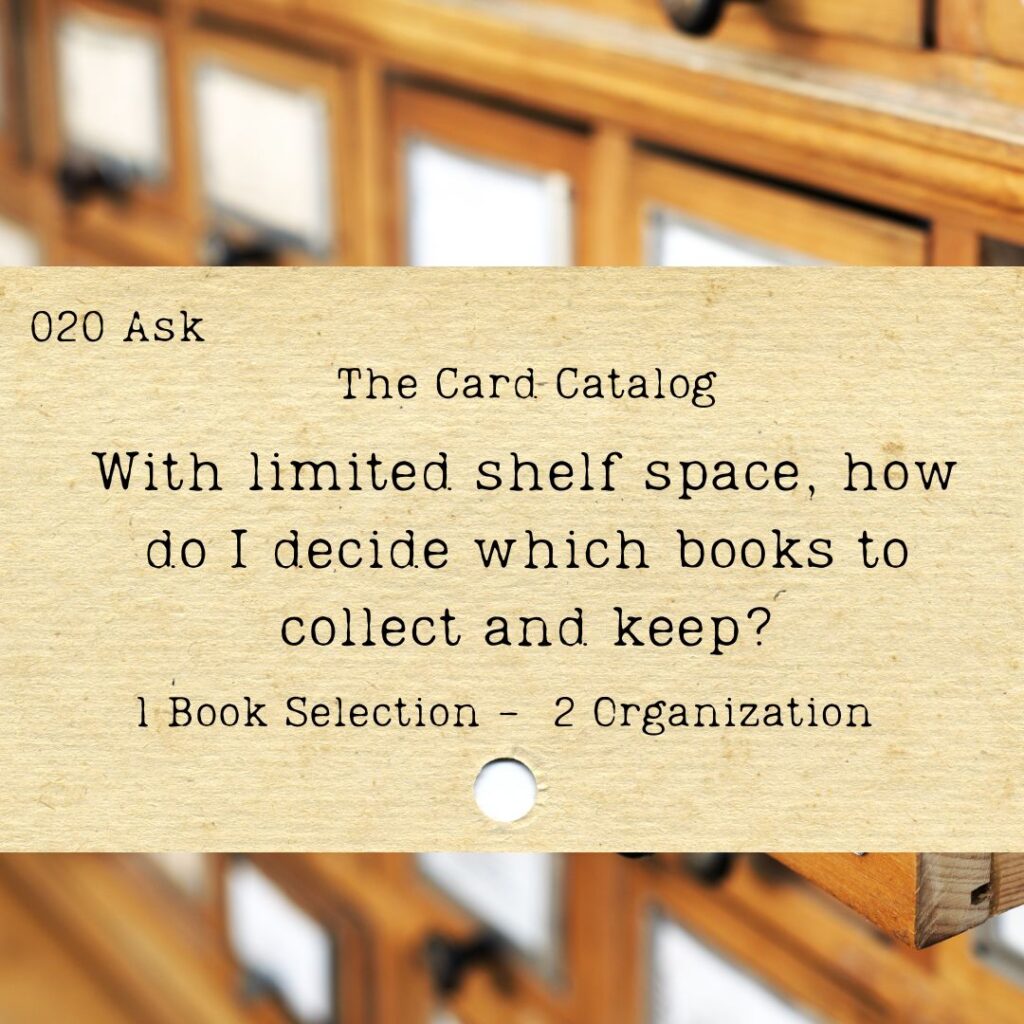Katie Hughes, Hughes Living Library in Tennessee.

I have a few criteria I keep in mind:
- Is the book worth keeping? Would it delight me to see my kids reading it? Would I want to recommend it to others?
- Is it easily found in the local library? If I’m running out of shelf space, this is a serious consideration.
- Even if it is easily found elsewhere, like the public library, is it one that someone in my family or some of my library patrons will love and want easy, frequent access to? If that’s the case, then it’s worth shelf space to me.
- Is it a book frequently recommended in literature-rich curricula, such as Five in a Row, Sonlight, Biblioplan, Ambleside or other Charlotte Mason curricula?
Other considerations (from Sherry Early, Meriadoc Homeschool Library)
- Is the book listed in a trusted source such as Biblioguides or in the library catalogs of other living books librarians, such as Michelle Howard’s database or some other library’s TInyCat LibraryThing catalog? If so, I might want to consider adding it to my collection.
- Even if I haven’t read the book in question, do I trust the author because of having read other books by that author? This is not a foolproof criterion by itself because sometimes good authors have a lapse or a change of heart and write bad books, but it is a consideration.
- What is the publication date? Not all old books are worth saving and shelving in your library, and not all newer books are poor quality. But the ratios of good to bad favor the older books, books published before 1970, and specifically those published between 1940 and 1970. Before 1930, in the First Golden Age of Children’s Literature (1850-1914), many children’s books were published that have become classics and are worth collecting (Anne of Green Gables, The Adventures of Tom Sawyer, and more). However, the Second Golden Age of children’s literature is usually defined as between the ending of World War II and 1970, more or less. After 1965 or 1970, children’s became more didactic, frequently preaching progressive morals and standards and ideals.
- Does this book fill a hole in my collection, or is it essentially a duplicate of another book that I already have? While I can’t cover every subject on every reading level in my library, I do like to have something to offer on major events, topics, and famous persons. On the other hand, I don’t really have room (or enough demand) for more than two or three biographies of George Washington or Abraham Lincoln, no matter how excellent each individual biography is.